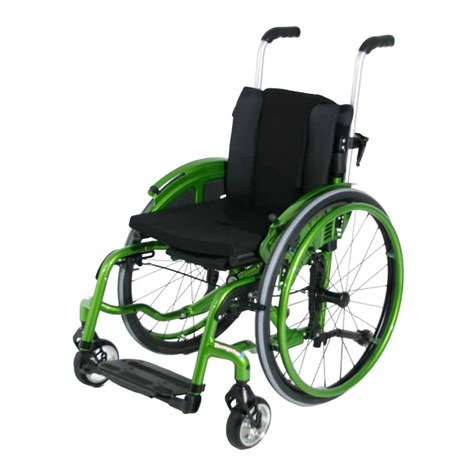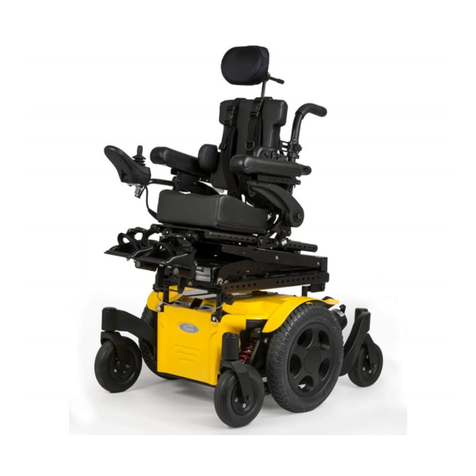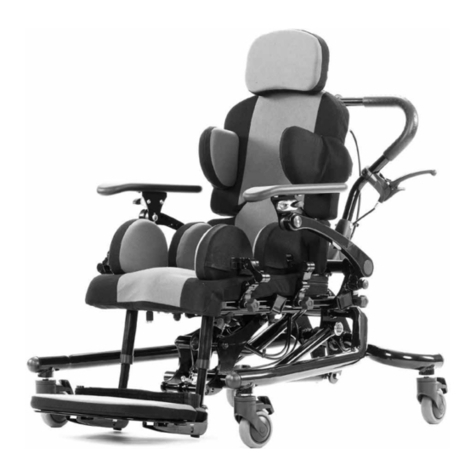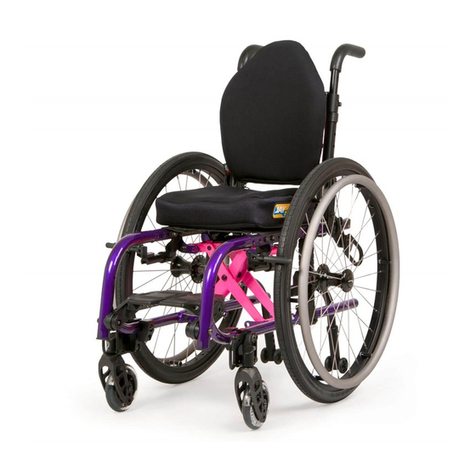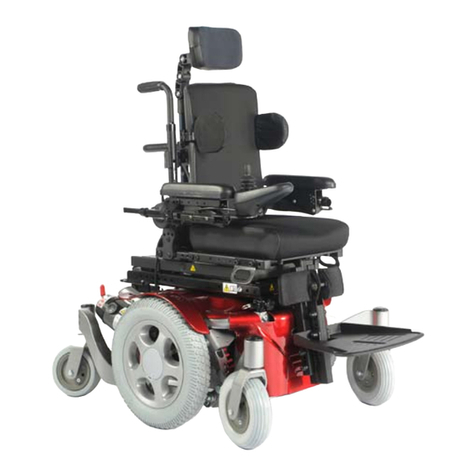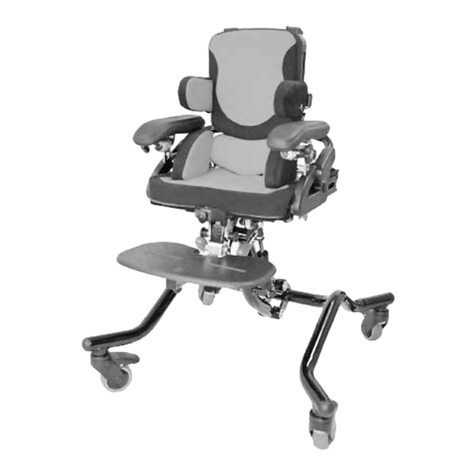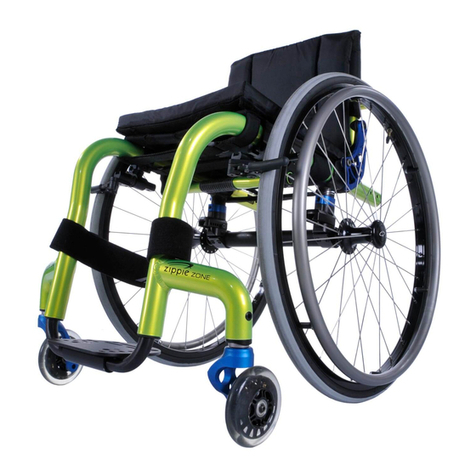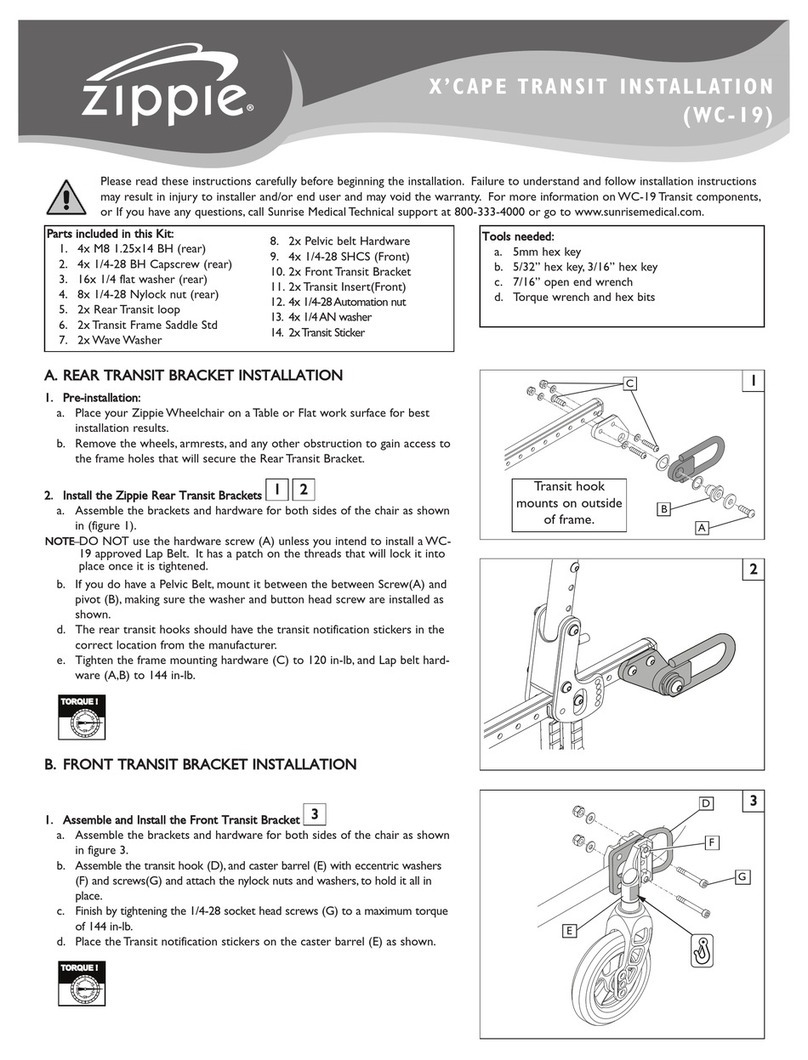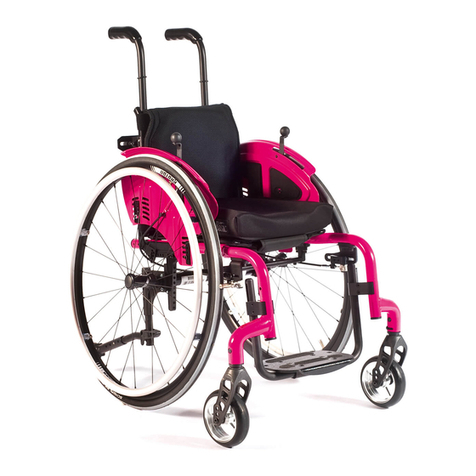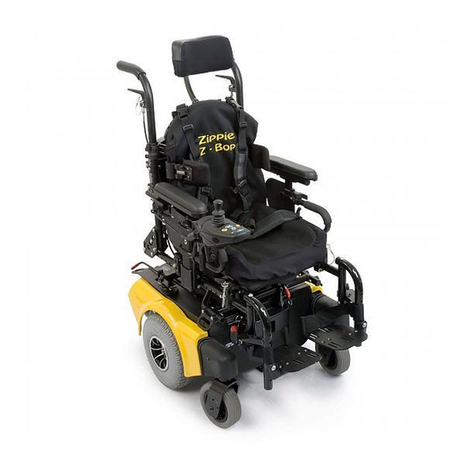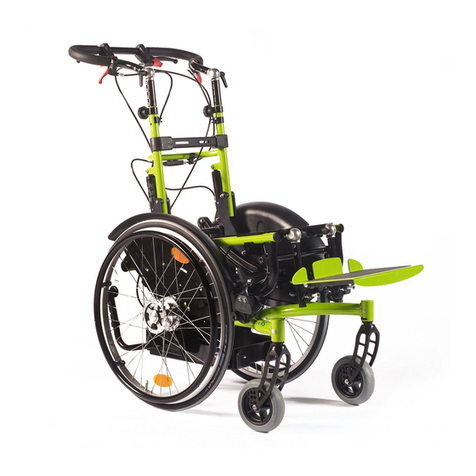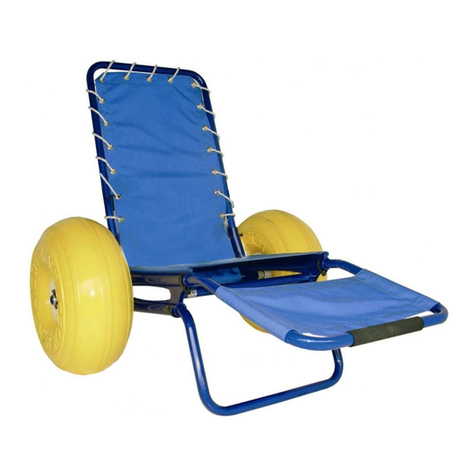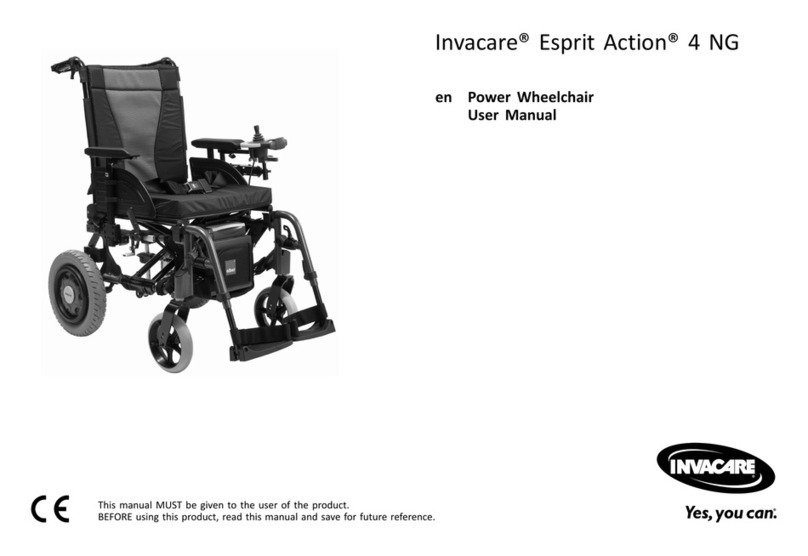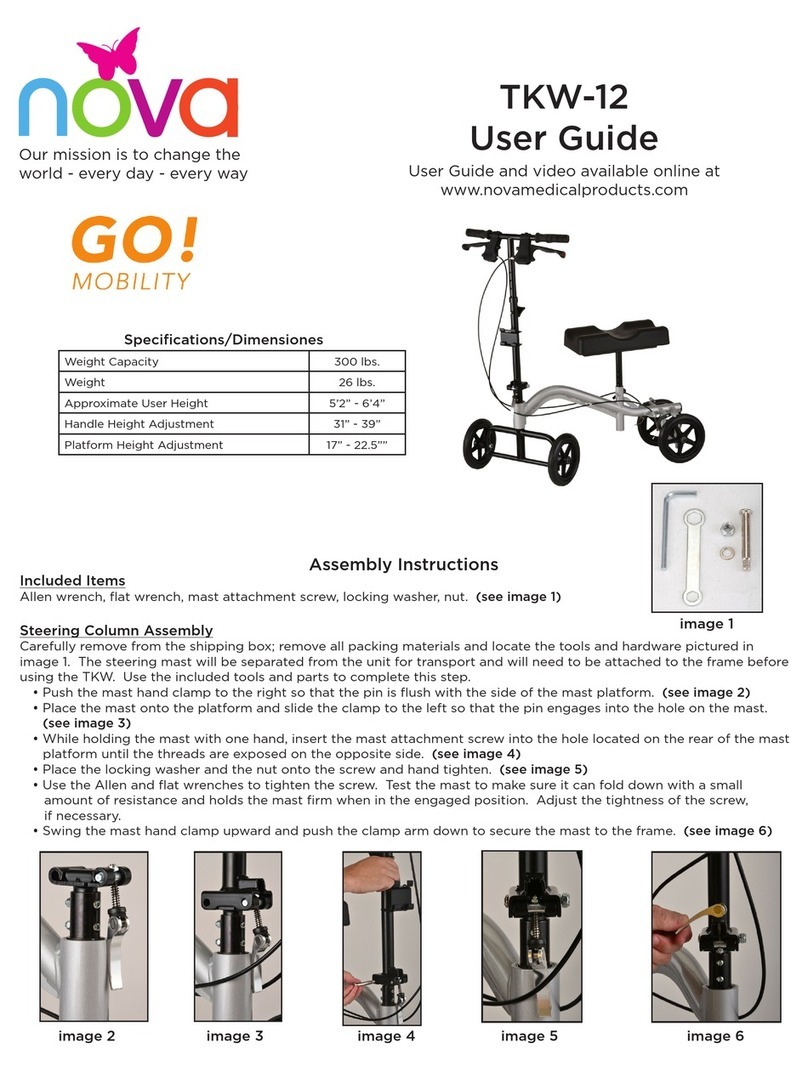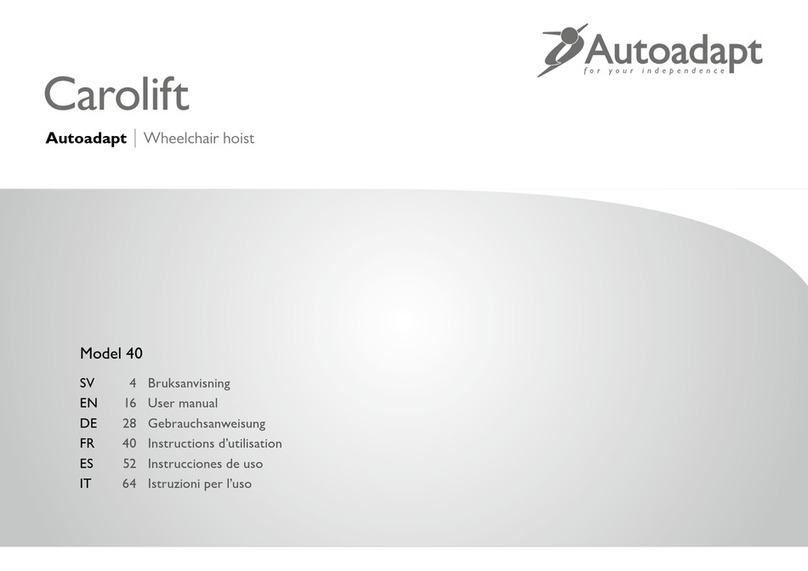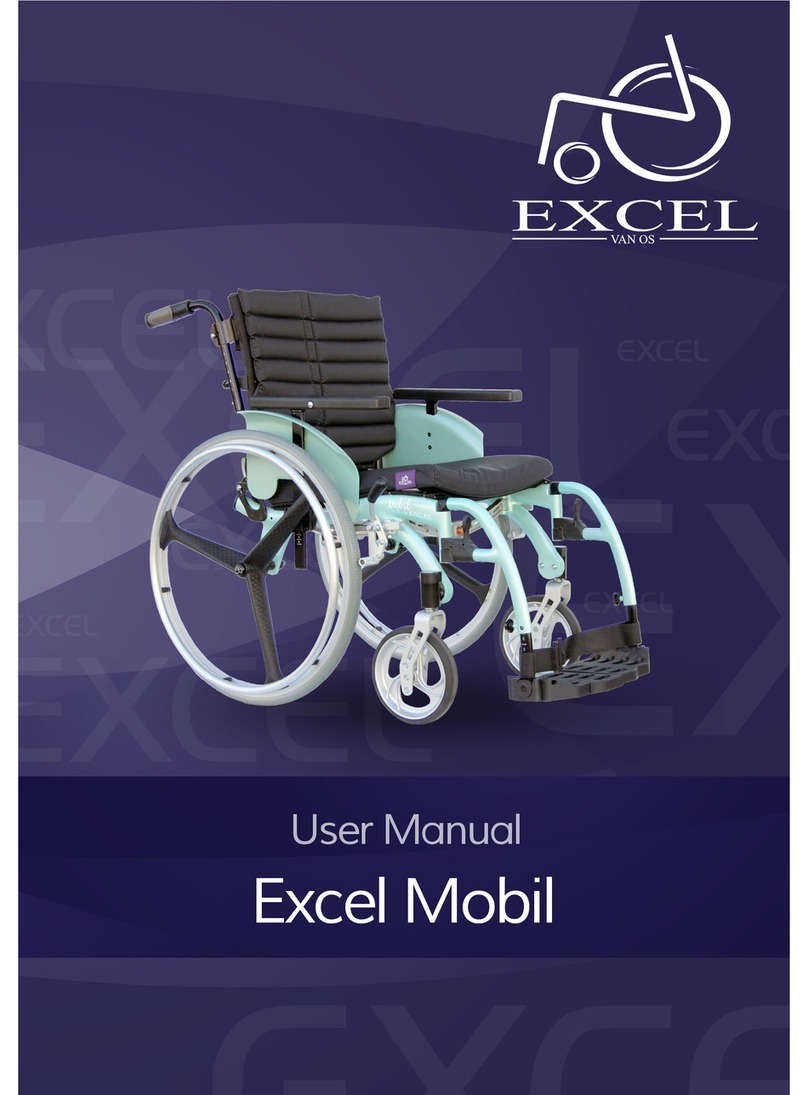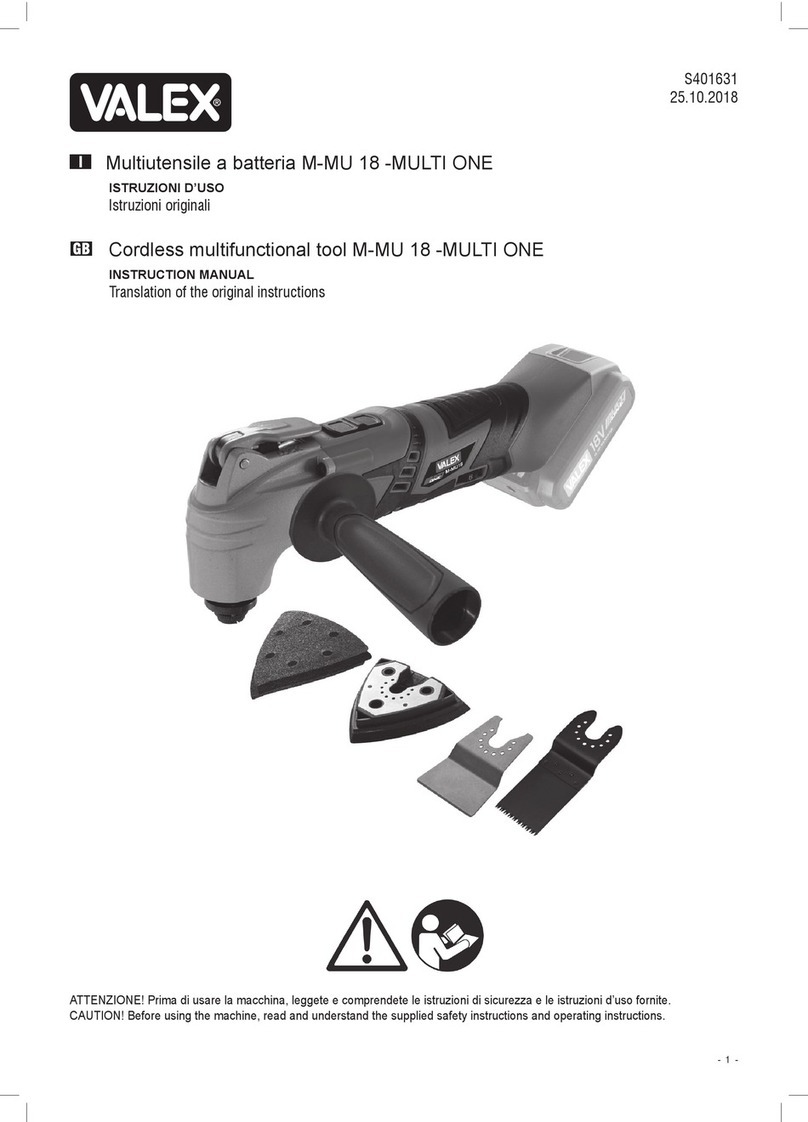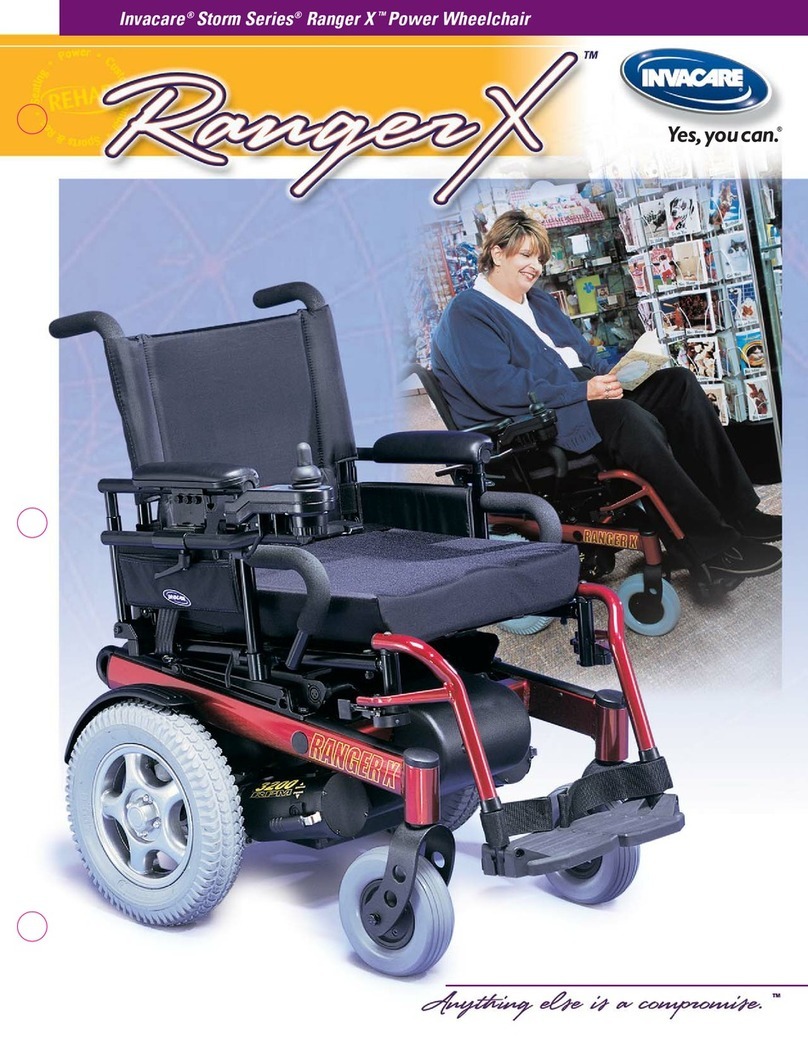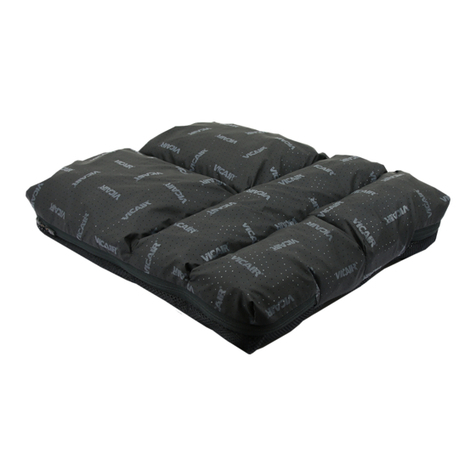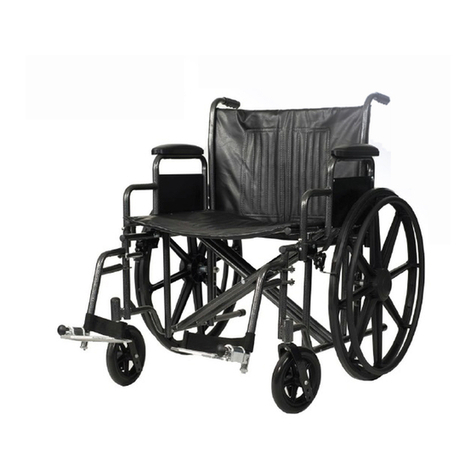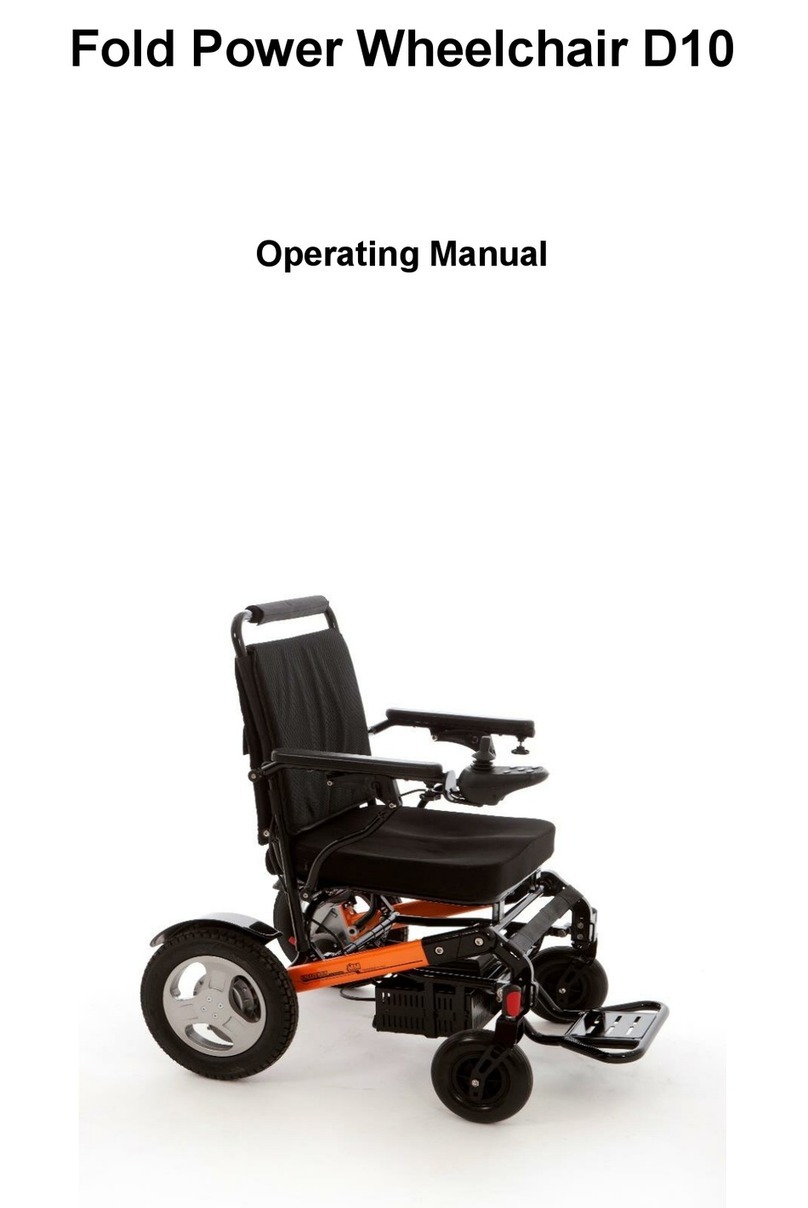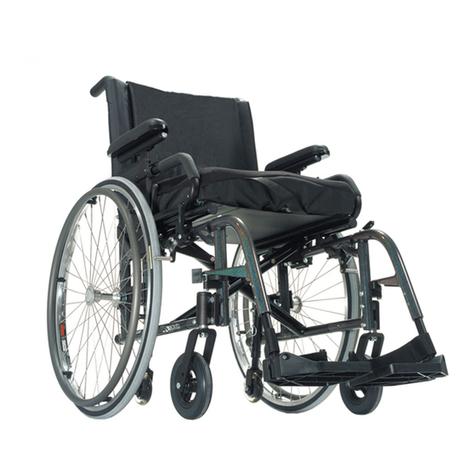
ENGLISH
8Pluton Rev.1.0
1.0 Important Safety Advice
WARNING!
We at Sunrise Medical are committed to producing
products of the highest standard. All of our products fulfil
the essential safety and environmental requirements as
defined in the European Directives. However, improper
use of the products will potentially put the users at risk
and therefore Sunrise Medical strongly suggest that the
following information is strictly adhered to at all times.
WARNINGS!
• Ensure all adjustment mechanisms are secure and in
place before operation. If it is likely that the hand-
wheels will be repeatedly loosened, Sunrise Medical
can supply allen key bolts as an alternative. We
strongly recommend this if there is a danger from
those in the vicinity of the user.
• After completing any alterations ENSURE all nuts,
bolts, knobs, hand wheels and other fixings are
securely tightened and in position, and that they are
regularly checked as part of the maintenance of the
chair. Never over adjust or over tighten moving parts.
• All postural support straps and harnesses should be in
place and properly adjusted to the user, prior to usage
of any kind (see pages 9, 10 and 11).
• When fitted to an indoor base frame the Pluton should
always be positioned on a level, flat floor. The Pluton
chair can be moved between one working area and
another. For safety ALWAYS return the product to a
neutral position and lower before moving (lower in
height, level the seat, ensure the back is upright etc).
After the chair has been moved and during use the
chair should be placed in a static position with the
brakes applied. Indoor base frames such as the multi
height and tilt base are designed to be used inside,
however it is acceptable to take these bases externally
for a brief period if transferring the chair from one
indoor area to another.
• Heavy items on the tray will affect stability. The fitting
of anything other than the standard Sunrise Medical
tray may substantially affect the stability of the seating
system and should therefore be checked before issue.
• If at any time it is noted that areas of the users skin
remain reddened after being out of the seating system
for around 10 minutes, urgently contact the qualified
professional who performed the hand over of the
equipment. This may be a sign of excessive pressure
being exerted by the seating. This might occur in the
initial use of a new seat where further adjustment may
be required, where the user has been badly placed,
grown or where an underlying medical problem exists.
Review may be necessary in such cases
• Keep all products away from excessive sources of
heat, cigarettes and naked flames.
• If you suspect that the system may be faulty, cease
use of the equipment straight away and immediately
contact the organization who supplied the system.
(contact information can be found on page 5).
• The equipment will be labelled with important
information. NEVER REMOVE these information labels
or allow them to be defaced, overlaid or altered.
• All modifications, adjustments, reconditioning, repairs,
disposal, and servicing of the seating unit must ONLY
be carried out by the agencies who supplied the
equipment (see pages 30-31).
DANGER!
Multi Adjustable Head support
Wings on the head support are ideally set at 45 degrees.
Do NOT bring the wings in tight to the head. Ensure that
the head support is set in such a way that the child cannot
loop their head around the wings and get stuck.
Flexi-Supports and Lateral Supports
Ensure the straps do not infringe on any feeding tubes the
child may have.
WARNING!
Abductors
These parts are designed to abduct the users knees to
help keep the hips in a good position. Do NOT use the
abducters as a way of holding the user in the seat. Flip
down the abducter when transferring the user in and out
of the seat.
Foot Sandals and Straps
Should only be fixed when the user is wearing shoes or
boots.
Tray
Do NOT use the tray as a way of securing children in a
chair. Always ensure that the lap strap and any other
straps supplied are used. Ensure that the tray clips are
secure on both sides of the tray. If the tray is damaged,
ensure that this will not be a hazard to the user. Never
leave hot items on the tray while children are unattended.
DANGER!
CHOKING HAZARD – This mobility aid uses small parts
which under certain circumstances may present a choking
hazard to young children.
